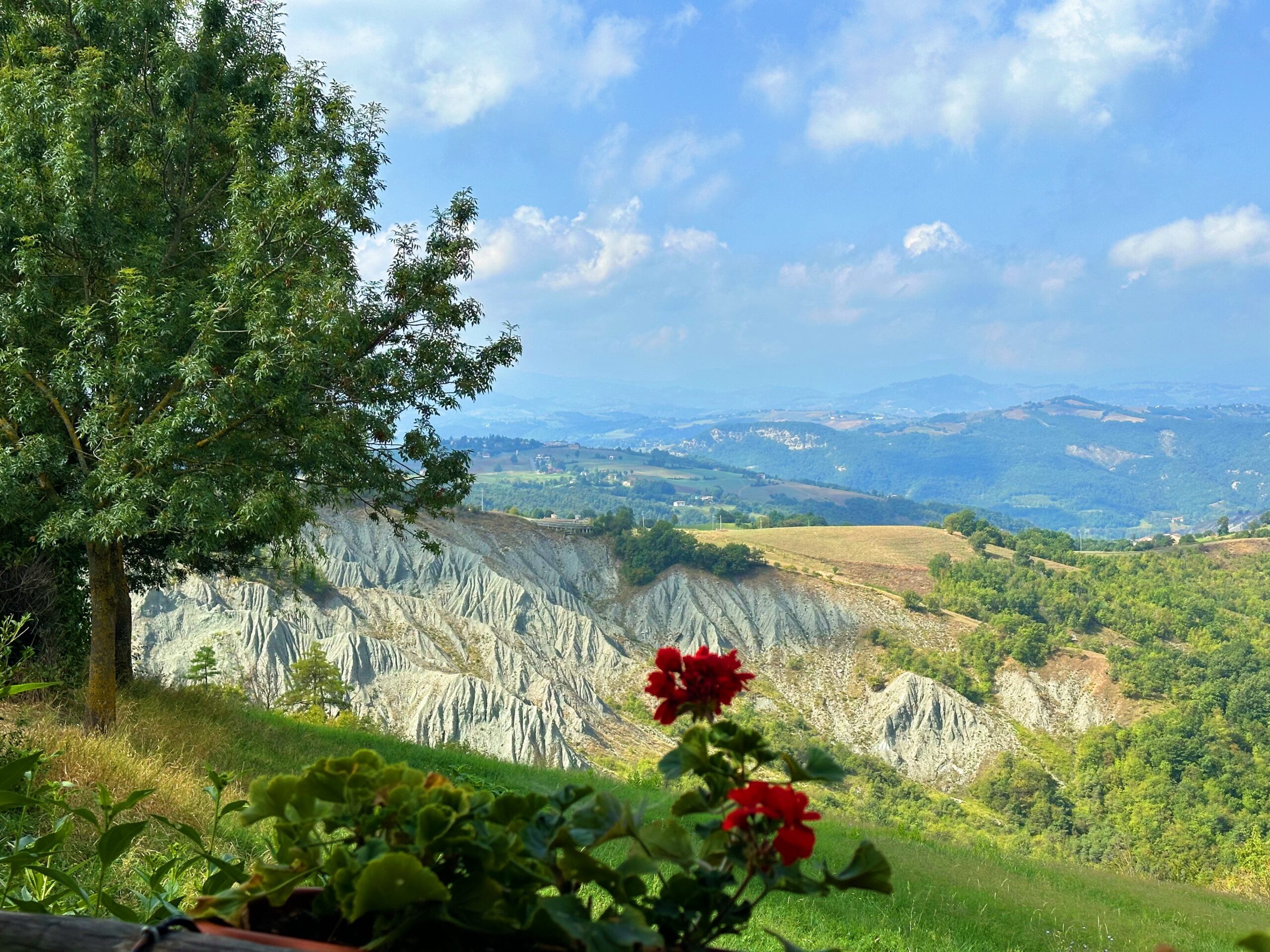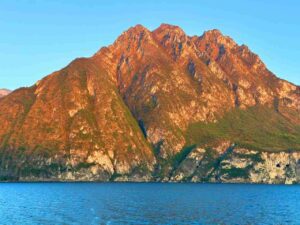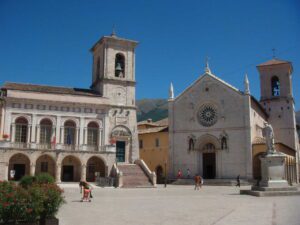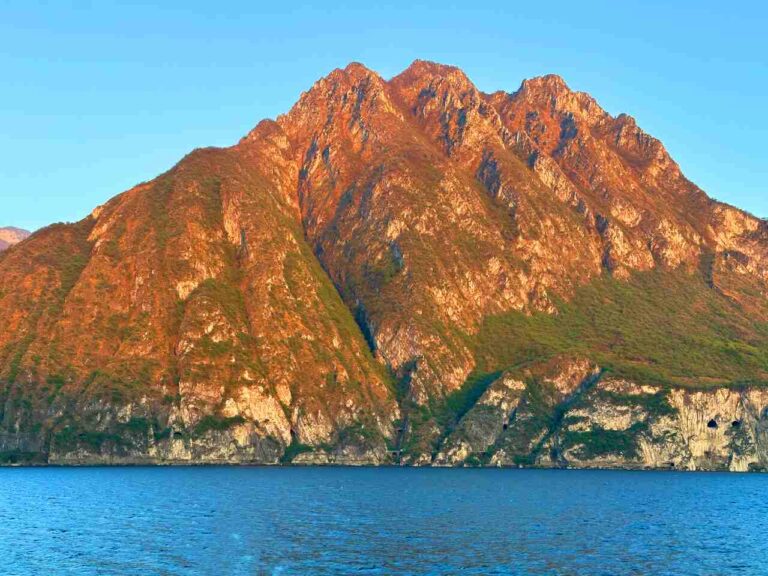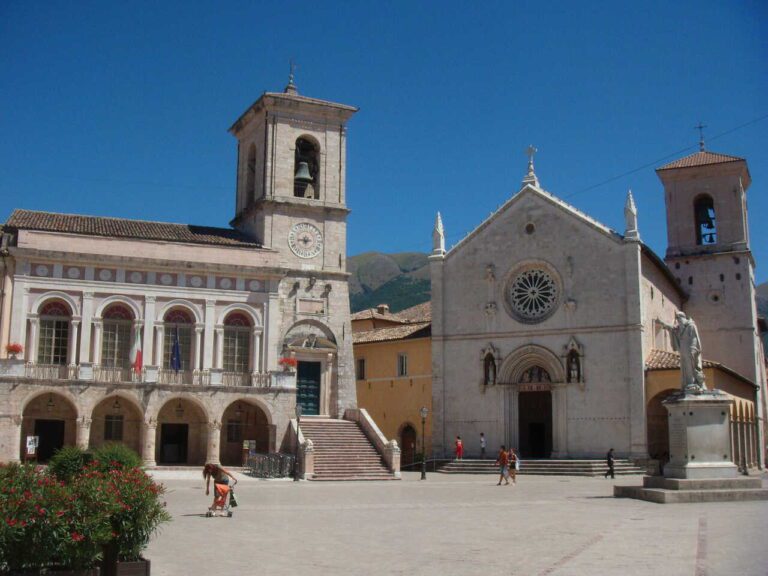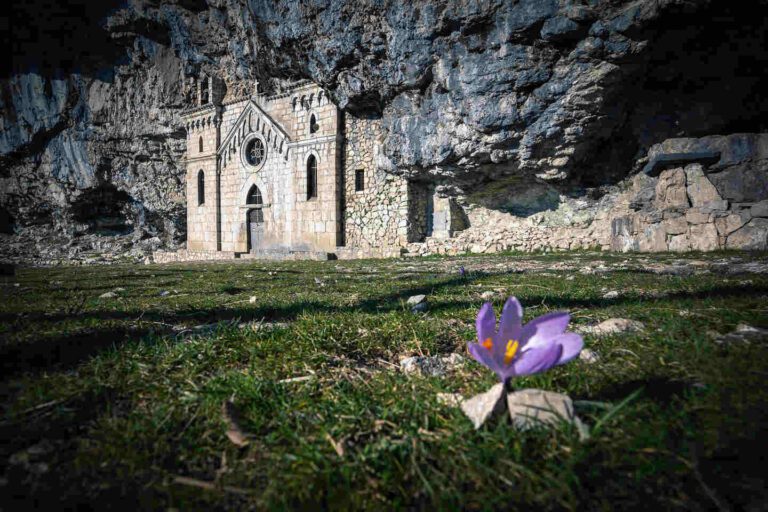La Via Matildica del Volto Santo, Emilia Romagna, Italy
La Via Matildica del Volto Santo is a 285 km hike that connects Mantova to Lucca, crossing three regions (Lombardy, Emilia Romagna, and Tuscany).
Named after the powerful medieval noblewoman Matilda of Canossa, who played a pivotal role in shaping the region’s history, this path traverses Reggio Emilia, offering travellers a unique blend of spiritual and cultural exploration.
It passes through numerous medieval villages, castles, and untouched valleys, offering breathtaking views and a rare sense of remoteness that’s hard to find in Italy.
Whether you hike the entire route or tackle a few stages, it’s accessible via public transport and private taxis. Though I’ve only managed a section of it myself, I recommend experiencing the entire trail if you have the time.
Catch you outside,
Elena
- Where: Emilia Romagna
- Multi Day Hike
- Distance: 115km
- Average Duration: 5 days
- Difficulty Level: Easy to Medium
- Total Elevation Gain: 4600m
- Point to Point
- Start/Finish: Reggio Emilia to San Pellegrino in Alpe
Who is this hike for?
This hike is best suited for those with a good fitness level. While the days can be long and can involve significant elevation gain, the trail is not technical. It’s well-marked but if you don’t speak the language, having GPX traces is essential. As always, be well-prepared for emergencies.
Reggio Emilia
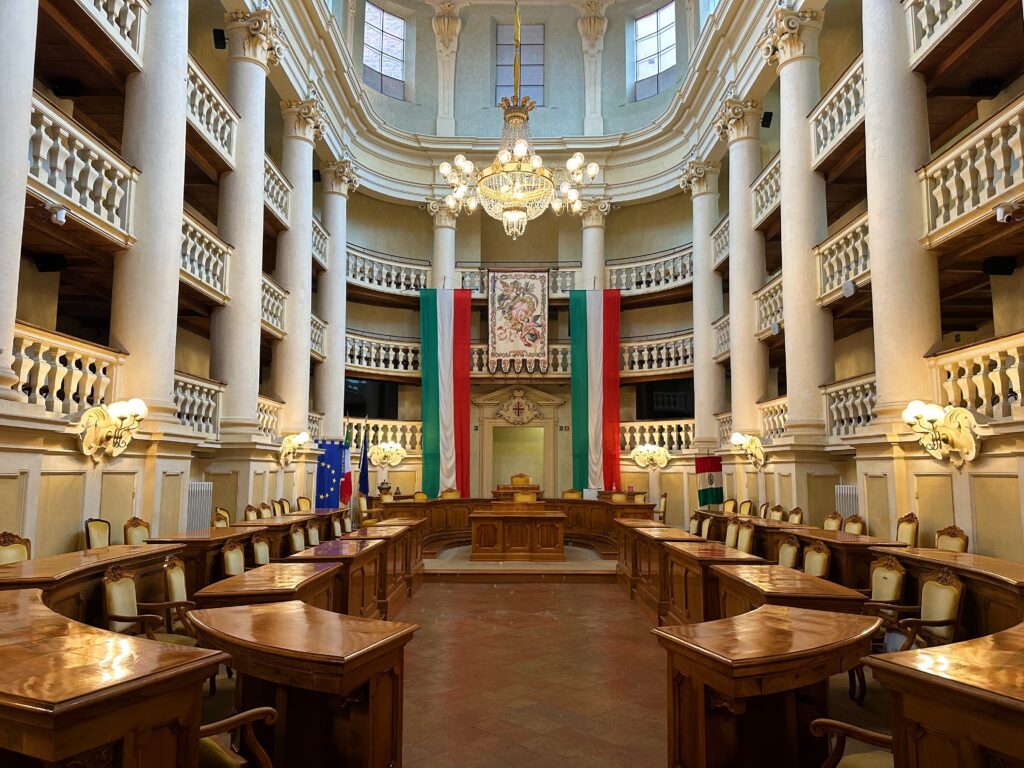
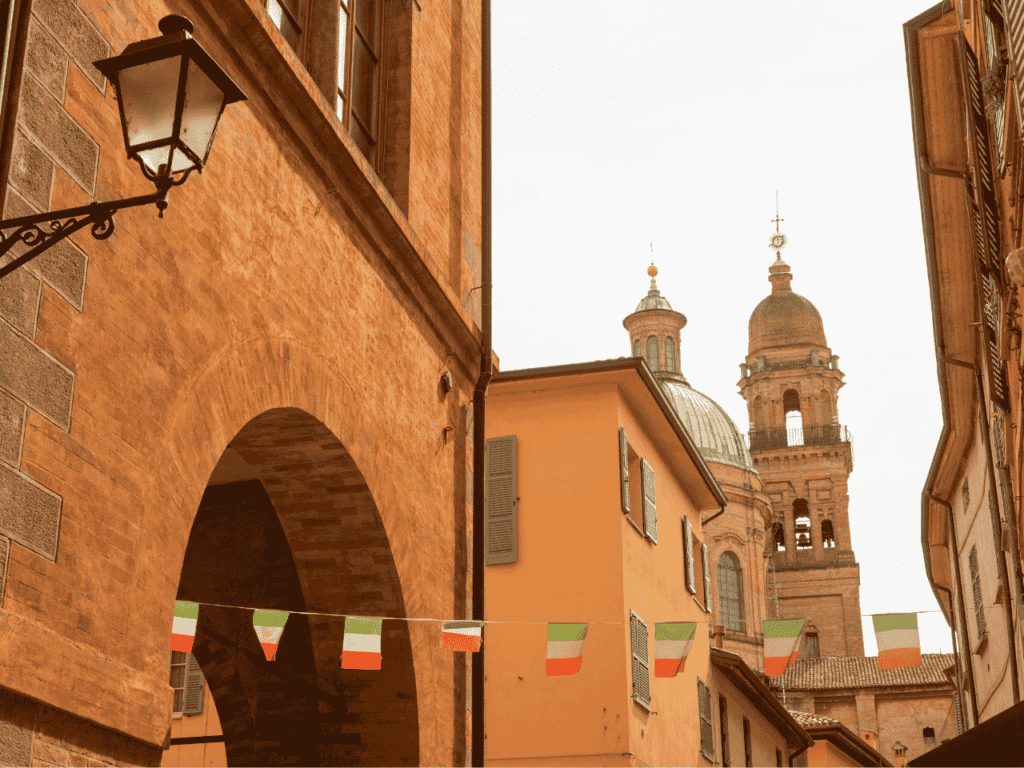
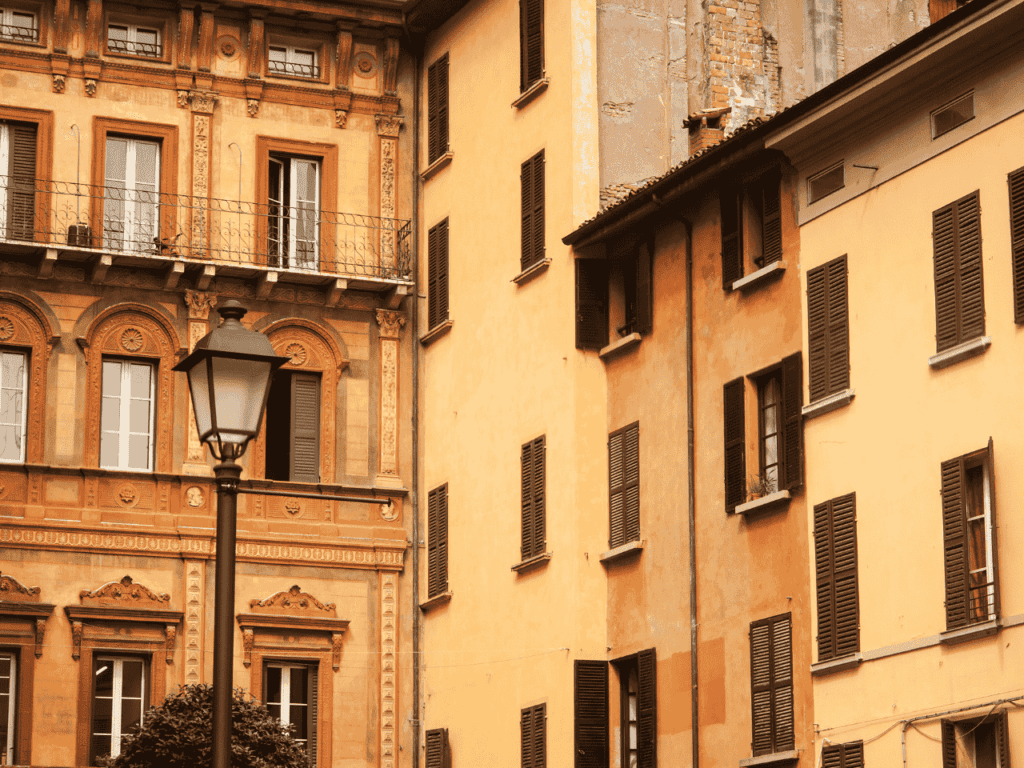
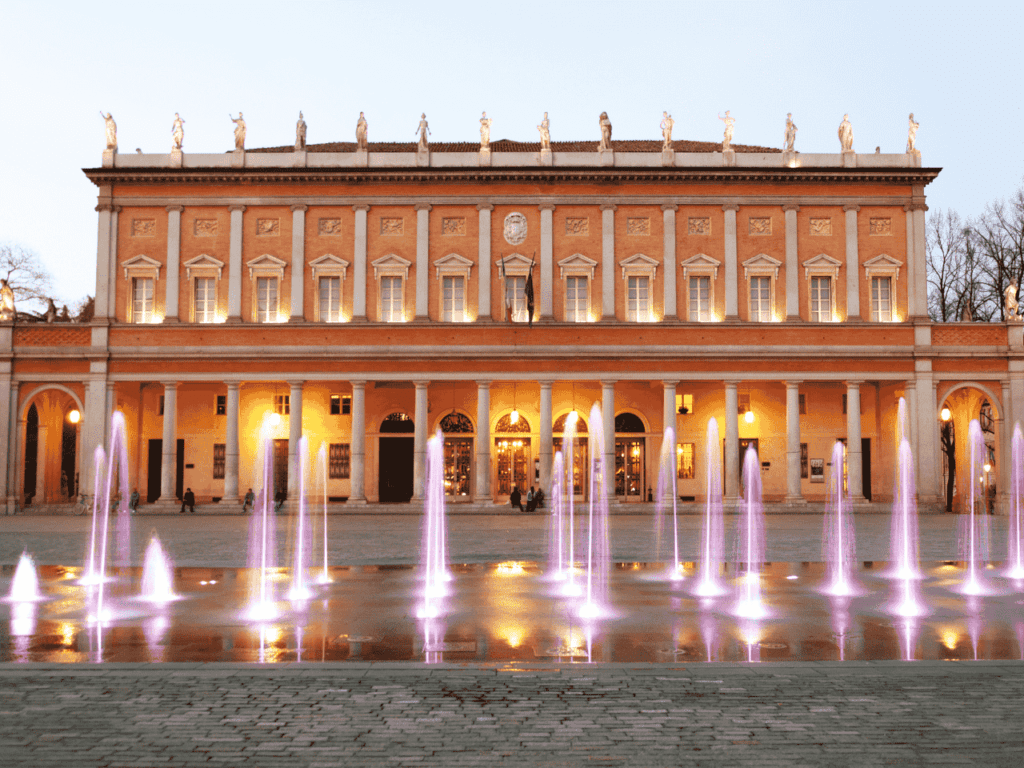
Make sure to arrive a day early to visit Reggio Emilia (must-visit in RE). Despite being a lesser-known tourist destination than her sisters Modena and Bologna, Reggio Emilia blends history and contemporary culture, and centuries-old streets lead to futuristic architecture that is well-known worldwide.
If you are looking for an authentic experience of Italian local life (which also means it is much more affordable), Reggio Emilia is your town!
Day 1 | Reggio Emilia to Canossa
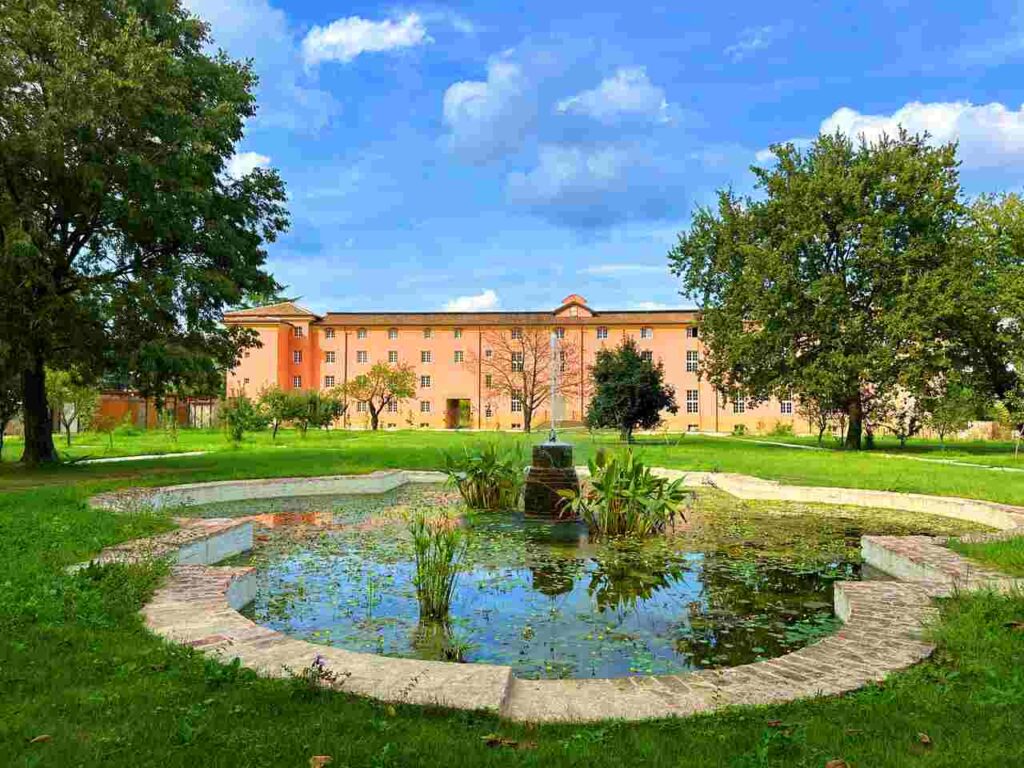
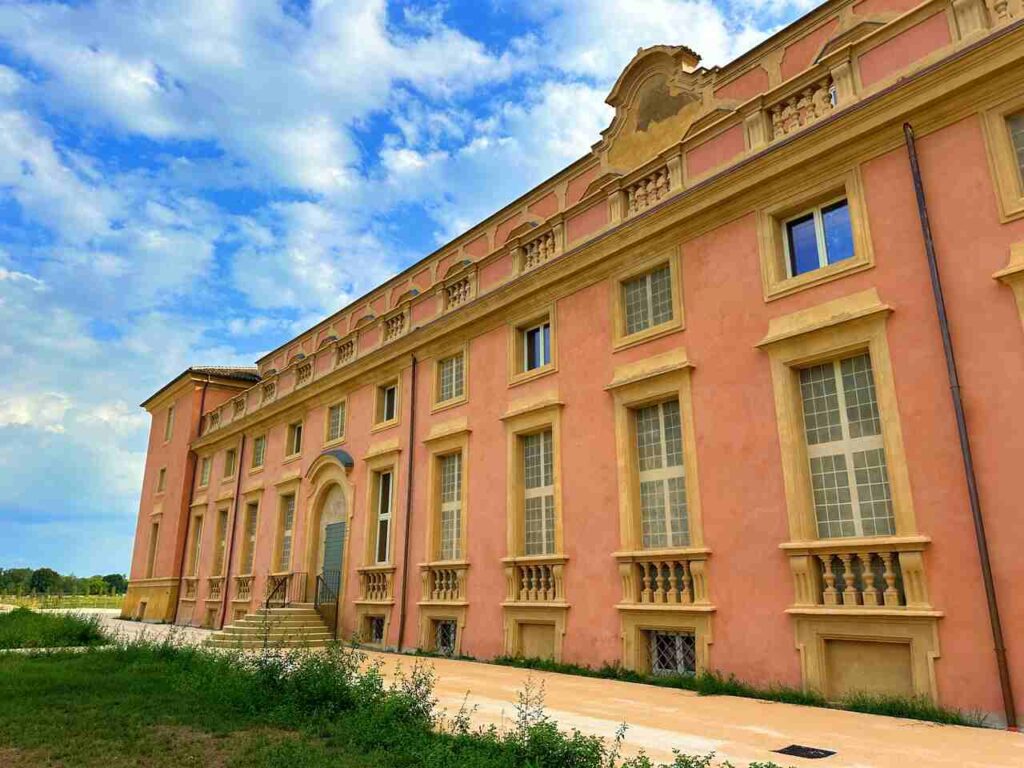


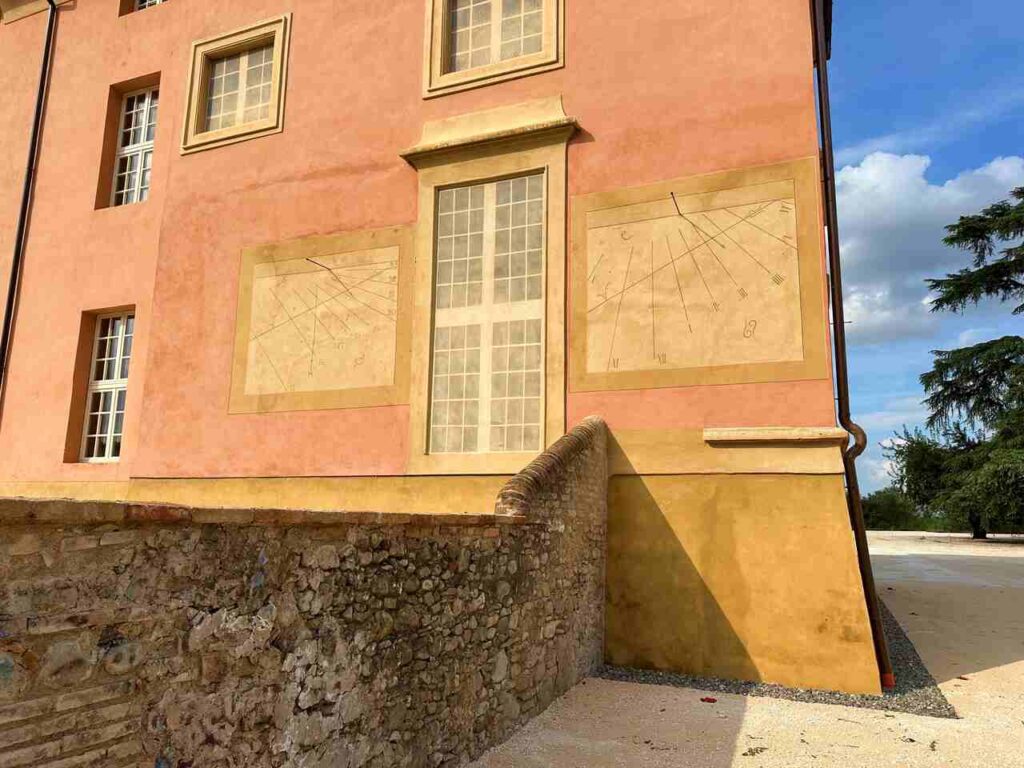
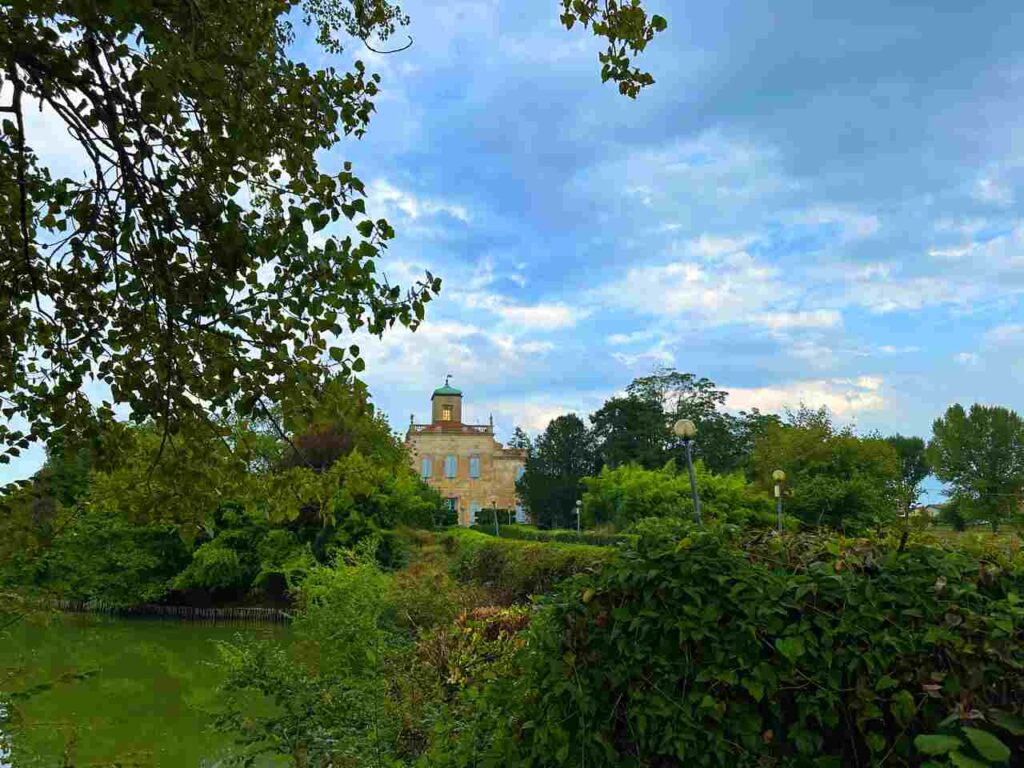
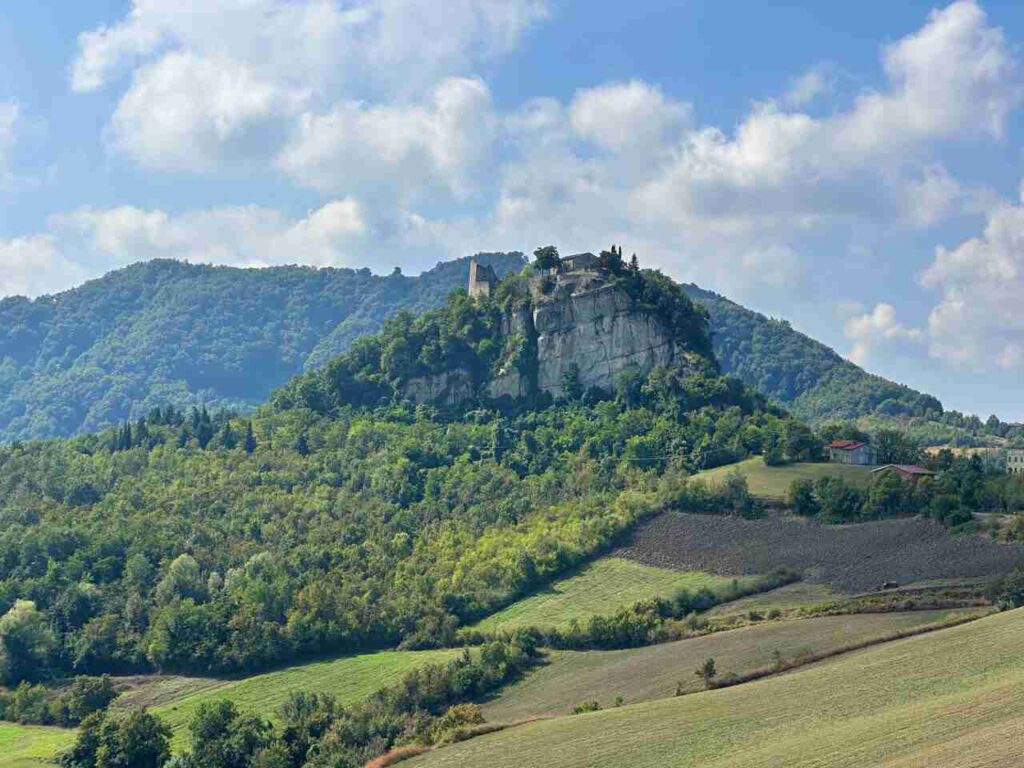
- Distance: 26.7km
- Elevation Gain: 806m
- Average Duration: 6-8h
- Difficulty level: Easy to Medium
- Start/Finish: Reggio Emilia to Canossa
This stage of the Via Matildica del Volto Santo leads from Reggio Emilia to Canossa, passing through sites steeped in history and beauty. After leaving Reggio Emilia, you encounter the remains of the once-grand Reggia di Rivalta, built starting in 1723 for Francesco III d’Este and Carlotta d’Orléans. Part of a larger complex that included the Villa di Rivaltella and the Vasca di Corbelli, the Reggia was designed as a “Little Versailles” by architect Lodovico Bolognini, famous for designing the Sala del Tricolore. Completed in 1733, the palace’s golden age spanned from 1740 to 1760, when it hosted grand Parisian-style festivities. However, in 1796, the palace was occupied and damaged by Napoleon’s troops. By 1807, parts of the villa were demolished, and the gardens were converted to agricultural use. Today, only the south wing and the ruined chapel remain, along with traces of the once-elaborate gardens.
Further along the path, you reach Villa d’Este, a grand estate tied to the same influential Este family, known for their patronage of Renaissance art and culture. The villa, with its gardens and elegant architecture, reflects the prestige of the Este dynasty. From here, the route ascends into the Apennines, ending at the iconic Canossa Castle, a fortress of Matilda of Canossa. The castle, perched on a hilltop, offers panoramic views and marks the end of this historically rich stage.
Day 2 | Canossa to Carpineti
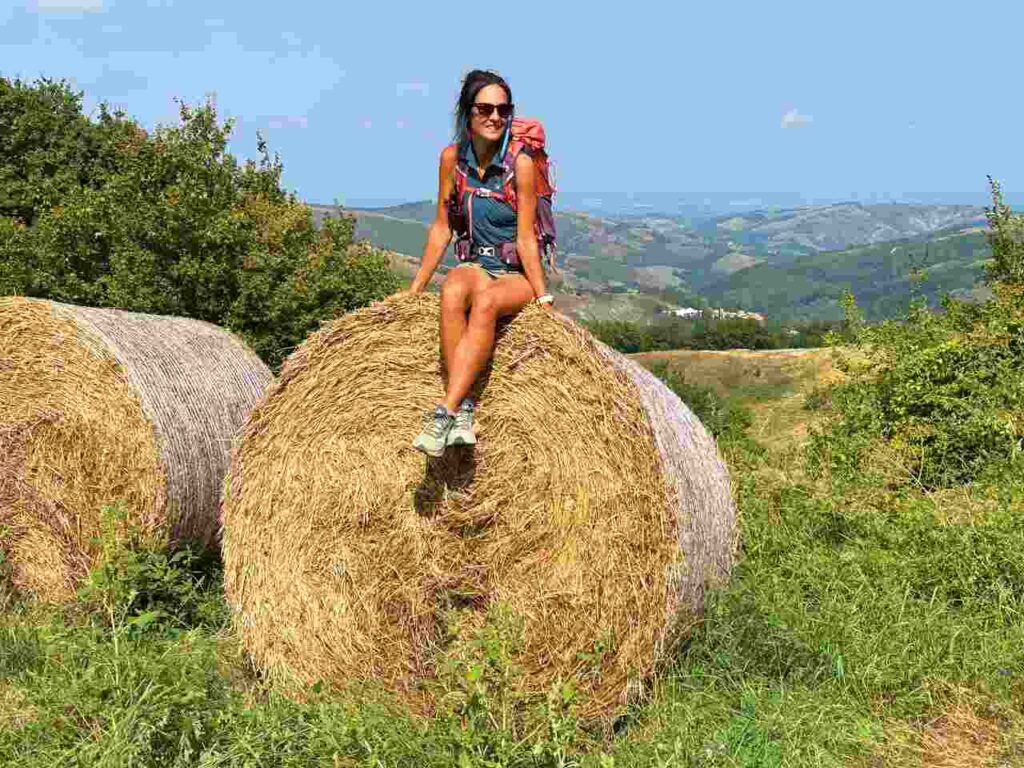

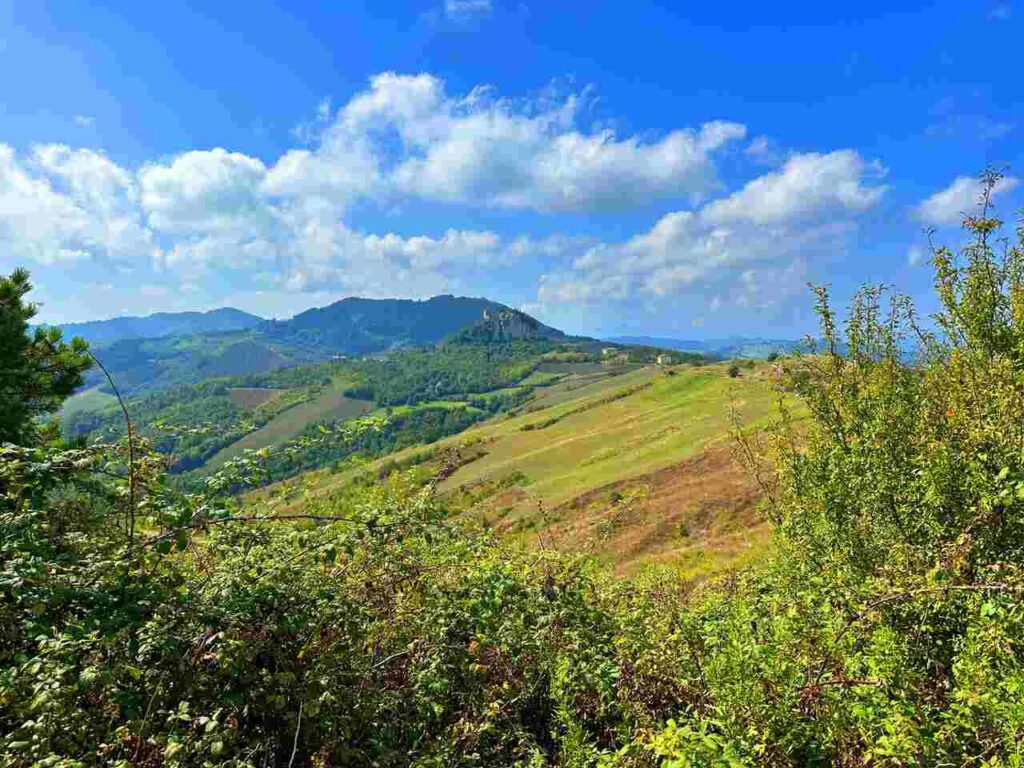

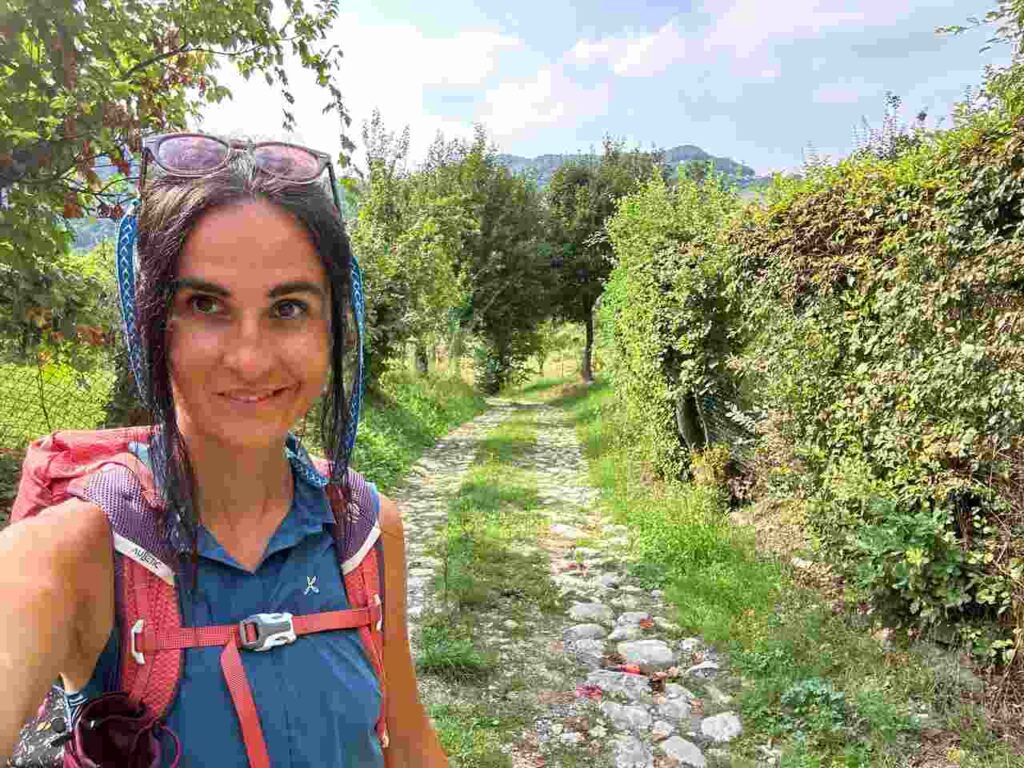

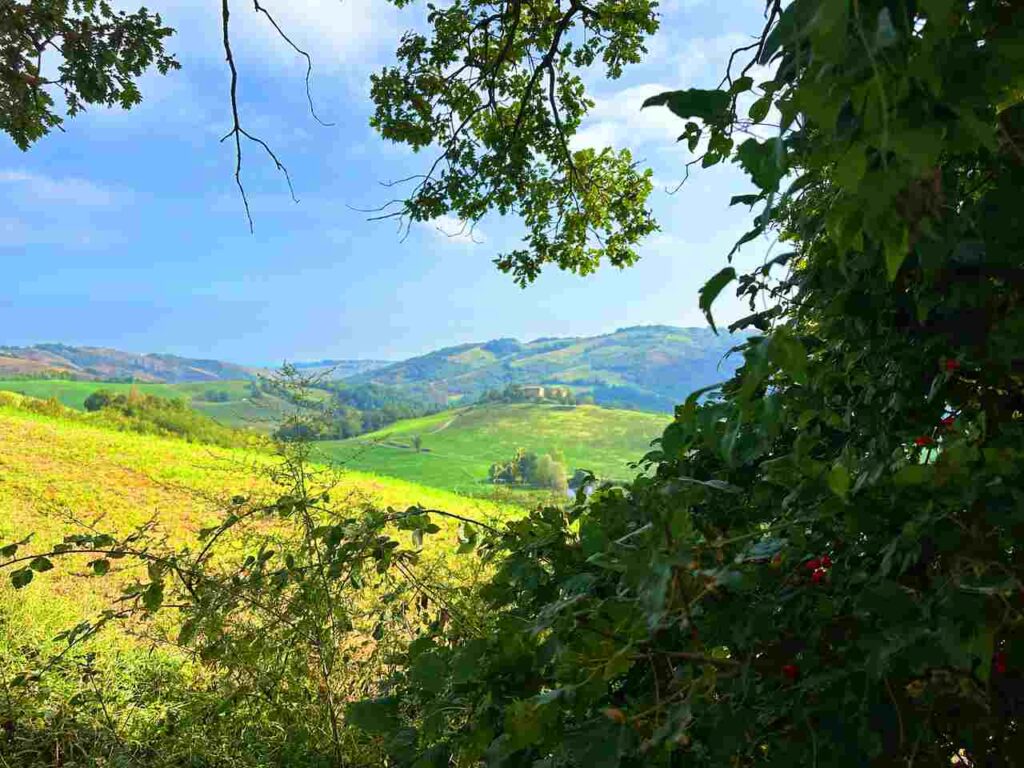
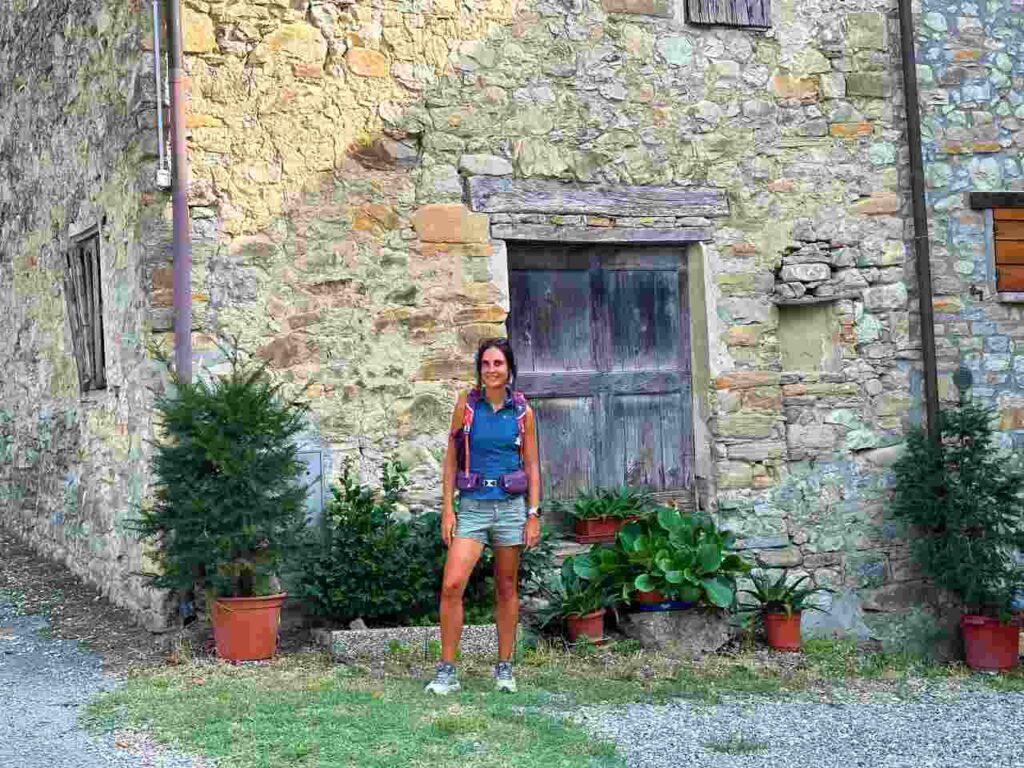
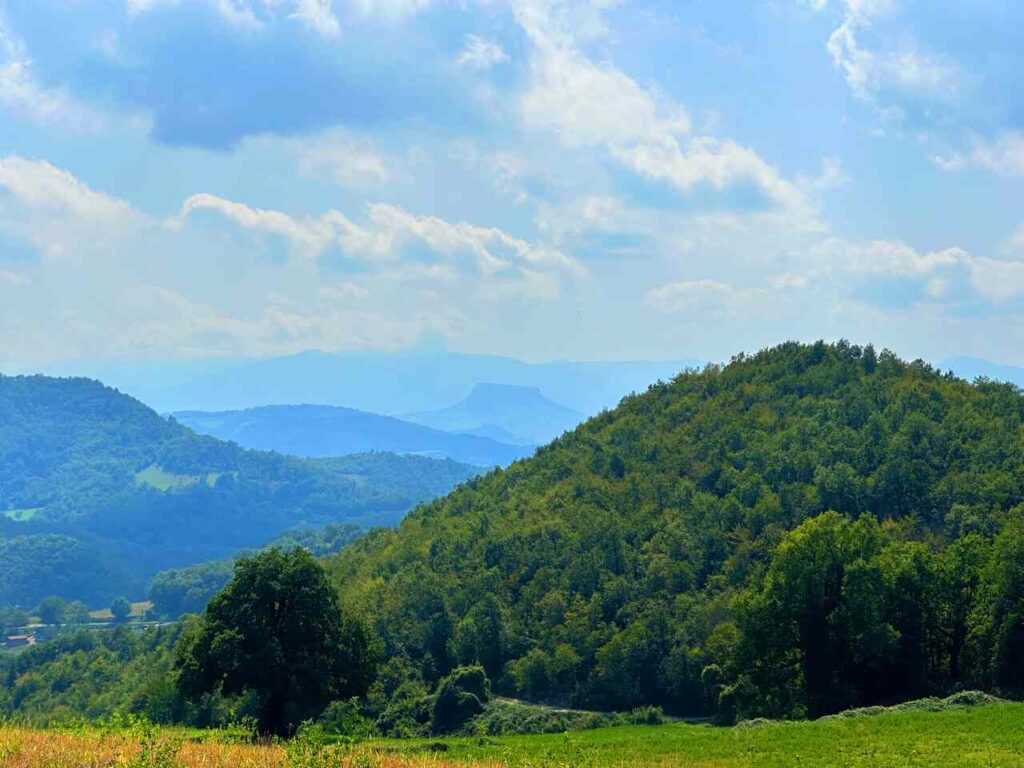

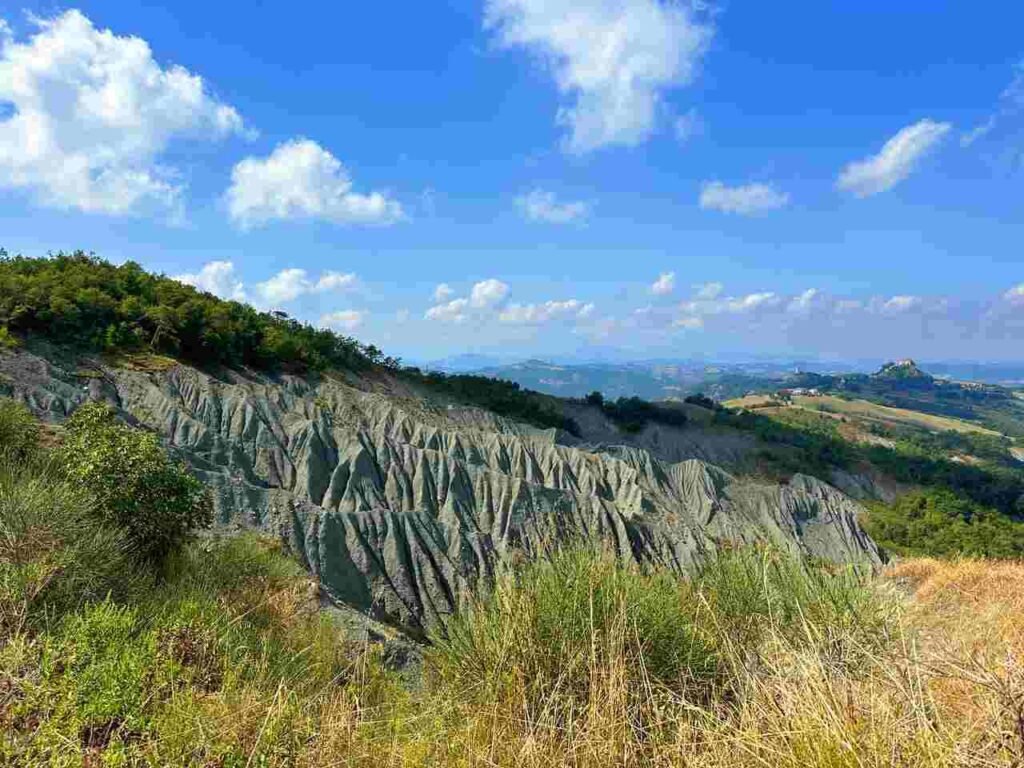
- Distance: 28.2 km
- Elevation Gain: 1014m
- Average Duration: 8-9h
- Difficulty level: Medium
- Start/Finish: Canossa - Carpineti
This section connects Canossa to Carpineti, passing through lands rich in history and natural beauty. Starting from Canossa, you leave the imposing Canossa Castle, the site of the famous “Road to Canossa,” where Emperor Henry IV met Pope Gregory VII during the Investiture Controversy. Matilde was crucial in the conflict between the papacy and the Holy Roman Empire.
Descend into a landscape of rolling hills, farmland, and medieval villages from there. My favourite one was Bergogno, where only 25 people live. When I passed there, they had the Polenta in Carriola festival (Polenta in a wheelbarrow)!
As you approach the Apennines, the route offers peaceful walks through rural countryside dotted with small villages and ancient farmhouses.
As you approach Carpineti, the terrain becomes hillier, and the ascent towards the Castello di Carpineti begins. The castle, perched on a high ridge, was another of Matilda’s strongholds and offers sweeping views of the surrounding valleys. This stage blends historical exploration with the natural beauty of the Apennine.
Day 3 | Carpineti to Toano
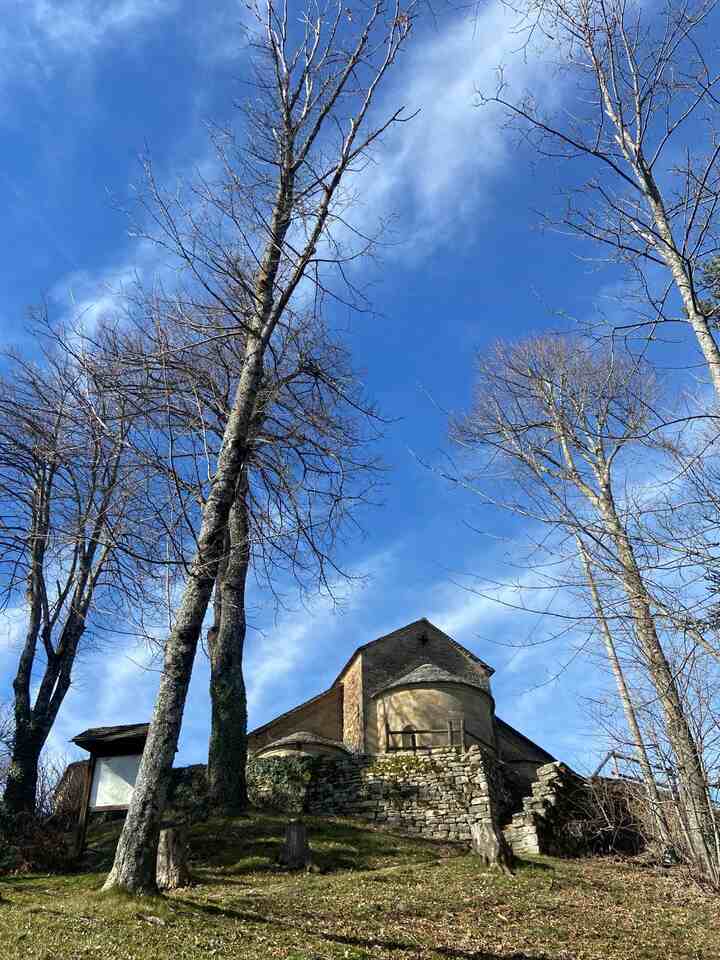
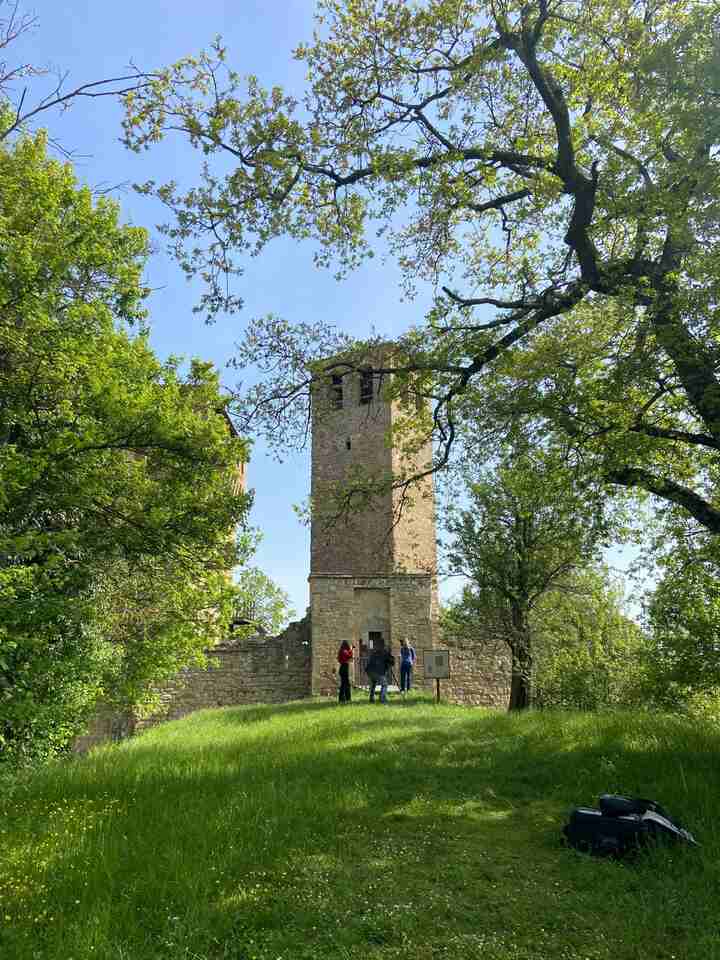
- Distance: 19.3km
- Elevation Gain: 890m
- Average Duration: 6-7h
- Difficulty level: Easy to Medium
- Start/Finish: Carpineti to Toano
This stage takes you from Carpineti to Toano. It begins with a climb to the Castello di Carpineti, a medieval stronghold linked to Matilda of Canossa. The castle offers panoramic countryside views before the route descends toward the Secchia River, where the landscape shifts to peaceful rural farmlands.
After crossing the Secchia, the path ascends to the Apennine Mountains to conclude in the village of Toano, home to the ancient Pieve di Santa Maria, a Romanesque church dating back over a thousand years. The church’s historical significance provides a fitting end to this stage.
Day 4 | Toano to Gazzano

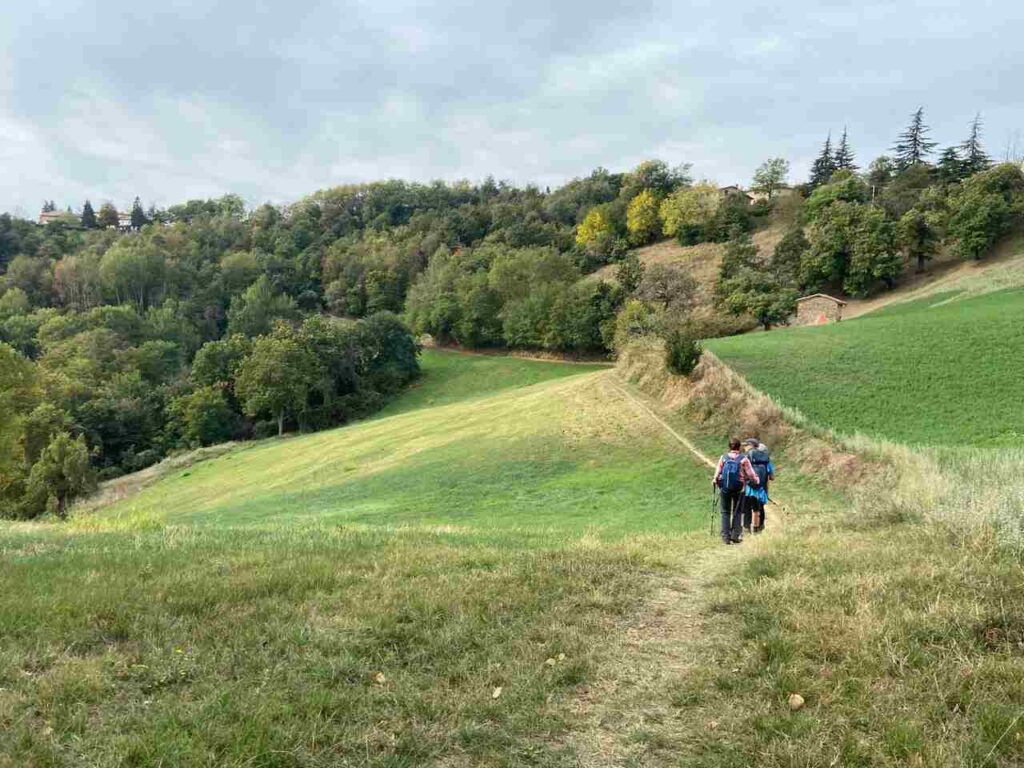
- Distance: 18.6km
- Elevation Gain: 763m
- Average Duration: 6-7h
- Difficulty level: Easy to Medium
- Start/Finish: Toano to Gazzano
Departing from the village of Toano, you leave behind the Pieve di Santa Maria and begin a gradual ascent through the foothills of the Apennines. The path winds through forests and meadows, with scenic views of rolling hills and distant peaks (on clear days). The peacefulness of the landscape makes this section ideal for quiet reflection and connection with nature.
As you approach Gazzano, the route descends toward this small, picturesque mountain village. The village offers stunning views of the surrounding Apennine range. The stage is relatively moderate but rewarding, giving travellers a deeper appreciation of the natural beauty that defines the Via Matildica.
Day 5 | Gazzano to San Pellegrino in Alpe


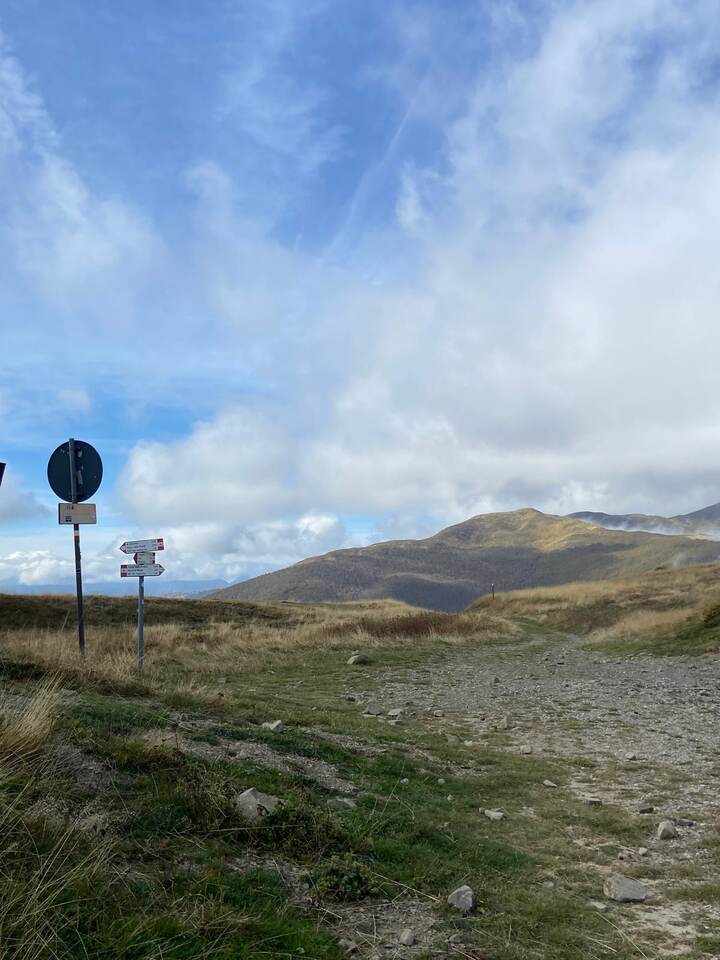


- Distance: 22.4km
- Elevation Gain: 1099m
- Average Duration: 9h
- Difficulty level: Medium
- Start/Finish: Gazzano to San Pellgrino in Alpe
This is one of the most challenging and scenic sections of the route. Leaving Gazzano, the trail ascends further into the Apennine Mountains, making the landscape more rugged and remote. The path is surrounded by dense forests, offering occasional breathtaking views of valleys and mountain peaks. This stretch requires more effort due to the steep climbs but rewards you with a deep sense of solitude and immersion in nature.
The stage culminates in San Pellegrino in Alpe, a mountain village known for its ancient San Pellegrino Sanctuary, a pilgrimage site since medieval times. Perched at over 1,500 meters, the sanctuary offers stunning panoramic views and a sense of spiritual serenity. This village is also the highest village in the entire Appenine and marks the end of the Via Matildica del Volto Santo in Emilia Romagna.
This journey along La Via Matildica del Volto Santo was truly unforgettable. It combines breathtaking landscapes with a rich tapestry of history. Suppose you’re seeking a trail to learn about Matilde di Canossa’s importance in Italy and Europe during the Middle Ages and to experience one of Italy’s best cuisines (IMO). In that case, this is a trail for you.
👇🏻Feel free to book a “Discover Italy like a Local” with me 👇🏻
Catch You Outside,
Elena
Frequently Asked Questions
Full hike infos
Find them here.
And you can send all your enquiries to cammino@viamatildica.it
Do you need an expert guide to accompany you?
I recommend using a guide, not to Find them here.
Dog allowed?
Yes, You can take your puppy… but only if you collect their 💩!!
Where to sleep? Tent?
On the way, there are B&Bs, farmhouses/agriturismo, room rentals, hostels, and some hotels and mountain huts/lodges. At https://www.viamatildica.it/en/, you can find suggestions for each stage.
You can do it with your tent, but remember you are close to towns and/or villages. You will also cross a national park, so you need to check the area’s requirements where you can camp.
Difficulty
Most of the sections are E; some sections are EE (experienced hikers), mostly because they are long days and have fair elevation gains).
Credentials?
YES! Asked them here
Best months to hike it?
- Spring, Autumn and Winter. In summer, it can be very hot, but still doable if you leave early in the morning and make sure you have plenty of water
- As usual, check weather forecasts for safety, avoiding the trail during heavy rain or strong winds.
What to bring?
- Wear sturdy, comfortable hiking shoes suitable for various terrains.
- Carry trekking poles for stability.
Trail waymarking
- Fairly well-marked trail; it could be improved.
- Have a Gpx map with you.
Planning Information
Options along the way if you want to shorten up the sections.
Getting there & Away
Few options:
- By car
- By Train to Reggio Emilia easily reached by anywhere in Italy
- By Bus from San Pellegrino in Alpe to Reggio Emilia
Permits & Fees
No Permits required.
IMPORTANT: Pay close attention to the data contained in this description.
They may be incomplete or outdated. The paths may change over time due to bad weather, fires or simply the change of seasons. Check in the comments if anyone has made any reports or recommended any changes.
Do you still have a question?
"Discover Italy Like a Local" Consultation
I always try to write everything I can to give the best possible informations, but if you feel like you need a specific and tailored consultation, feel free to book a one-on-one consultation to address your concerns, answer your questions, and provide support throughout the planning process.❤️

